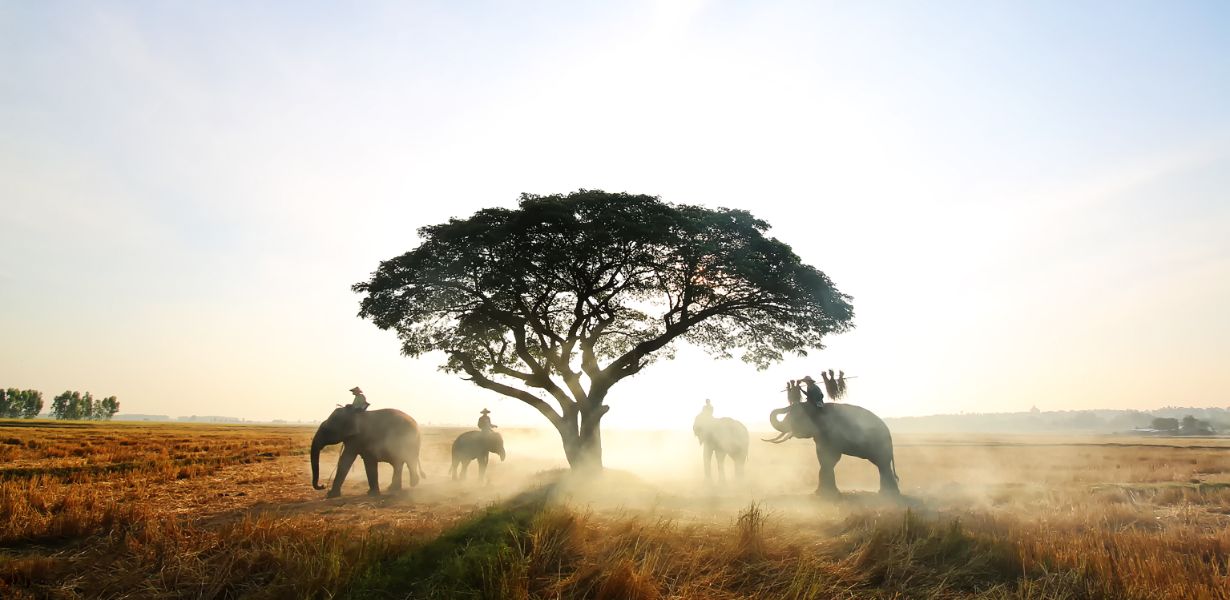
The allure of wildlife photography has been etched into our human DNA for centuries. It's a pursuit that encapsulates the thrill of capturing the untamed beauty of nature. In the digital era, wildlife photography has undergone a significant transformation, offering both amateur enthusiasts and seasoned professionals an unparalleled opportunity to document the majesty of the animal kingdom. Join us on a virtual safari as we delve deep into the world of wildlife photography, uncovering the techniques, equipment, and experiences that define this remarkable art form.
Unveiling the Magic of Wildlife Safaris
The journey into the realm of wildlife photography often begins with a safari adventure. Safaris offer a unique window into the heart of nature, where incredible creatures roam free. It's a dynamic experience that provides photographers with countless opportunities to capture nature's marvels.
Types of Safaris: There's a myriad of safari options, from classic game drives to walking safaris and riverboat expeditions. Each offers distinct perspectives for photography.
Choosing the Right Location: From the Serengeti in Tanzania to the Okavango Delta in Botswana, selecting the perfect safari location is essential. Different regions host different species, landscapes, and photographic possibilities.
Time of Day Matters: Wildlife is most active during the golden hours of sunrise and sunset. Opting for early morning and late afternoon safaris increases your chances of capturing stunning shots.
Equipping the Photographer: Cameras, Lenses, and Accessories
To embark on a successful wildlife photography journey, the right gear is imperative. The digital era has ushered in a multitude of options for photographers to capture the splendor of the animal kingdom.
Camera Selection: High-quality DSLR and mirrorless cameras are the go-to choices for wildlife photography. Fast autofocus and high ISO capabilities are crucial.
Lenses for Precision: Telephoto lenses with long focal lengths are ideal for capturing distant subjects, while macro lenses allow you to explore intricate details.
Essential Accessories: Items like sturdy tripods, gimbal heads for stability, and camouflage gear to blend into the environment are indispensable.
Mastering Wildlife Photography Techniques
Photographing wildlife requires a unique skill set. It's a blend of patience, technical proficiency, and creative vision.
Understanding Animal Behavior: A deep knowledge of animal behavior helps anticipate movements and reactions, resulting in more compelling shots.
Composition and Framing: Applying principles of composition such as the rule of thirds and leading lines can make your photos stand out.
Mastering Shutter Speed and Aperture: The choice of shutter speed and aperture determines the mood of your shots. Fast shutter speeds freeze action, while wide apertures create beautiful bokeh.
Post-processing Magic: Software like Adobe Lightroom and Photoshop can enhance and refine your wildlife images.
The Ethical Side of Wildlife Photography
Responsible wildlife photography goes hand in hand with the conservation of natural habitats and the creatures that inhabit them. It's our duty as photographers to be ethical and respectful.
Maintain a Safe Distance: Never disturb or stress animals for a photograph. Keeping a safe distance is vital for their well-being.
Leave No Trace: Ensure your presence leaves no negative impact on the environment. Don't litter or damage habitats.
Support Conservation: Many wildlife photographers are involved in conservation efforts, contributing a portion of their proceeds to protect endangered species and their habitats.
Final Words
In the digital era, wildlife photography has evolved into an art form that connects us with the wonders of the natural world. Through safaris, equipment selection, and mastering techniques, we can capture the essence of wildlife. However, ethical considerations are equally important in ensuring the longevity of this art. Remember, the true beauty of wildlife photography lies not only in the stunning images it produces but also in its potential to inspire conservation and safeguard the planet's incredible biodiversity.
Commonly Asked Questions
1. How can I get started with wildlife photography?
Begin by researching destinations for safaris and investing in the right camera equipment. Consider joining workshops or learning from experienced photographers.
2. What are some tips for capturing elusive wildlife?
Patience is key. Study the animals' behavior, choose the right time of day, and be prepared to spend extended periods observing and waiting.
3. Can I pursue wildlife photography as a career?
Absolutely. Many wildlife photographers turn their passion into a profession by selling their work, leading workshops, or contributing to conservation efforts.
4. What is the role of post-processing in wildlife photography?
Post-processing allows you to enhance the quality of your images by adjusting exposure, color, and sharpness. It can make a good photo great.
5. How can I contribute to wildlife conservation through photography?
You can use your photography to raise awareness, support organizations dedicated to conservation, or document the effects of environmental changes on wildlife.





